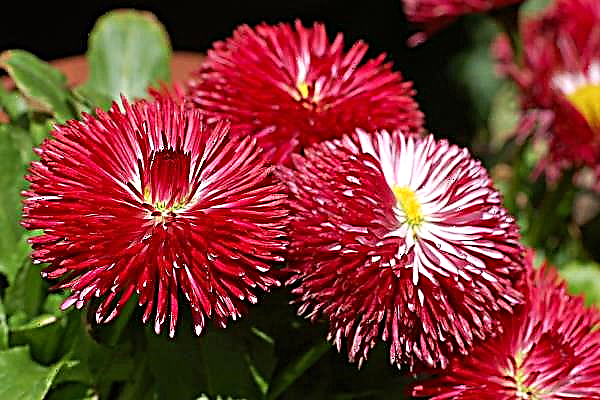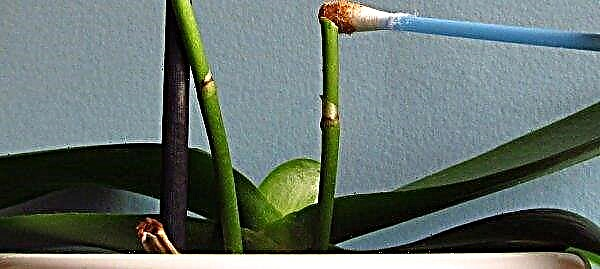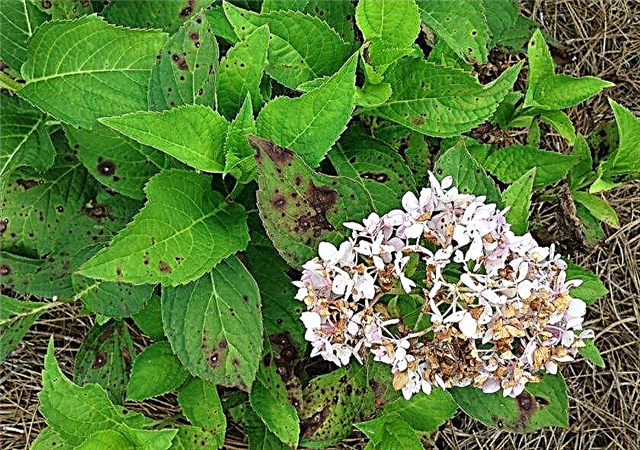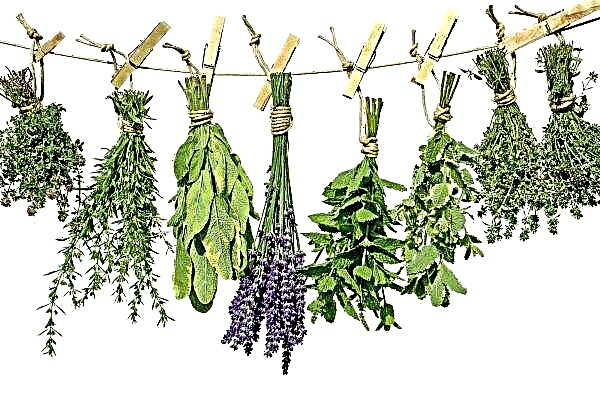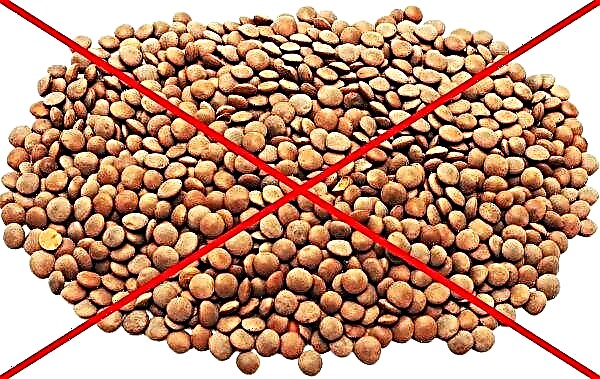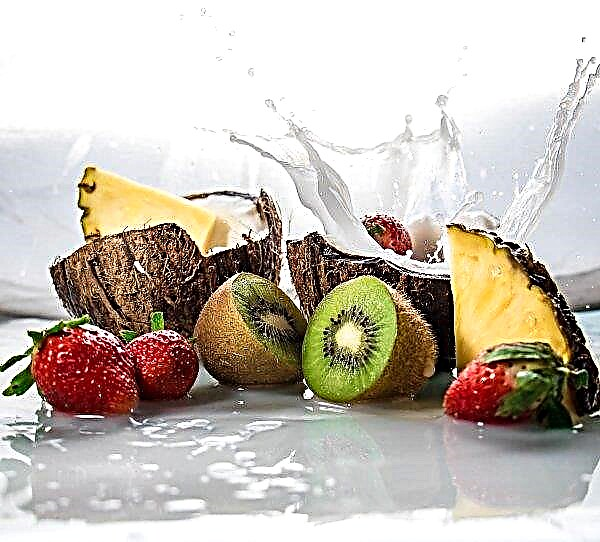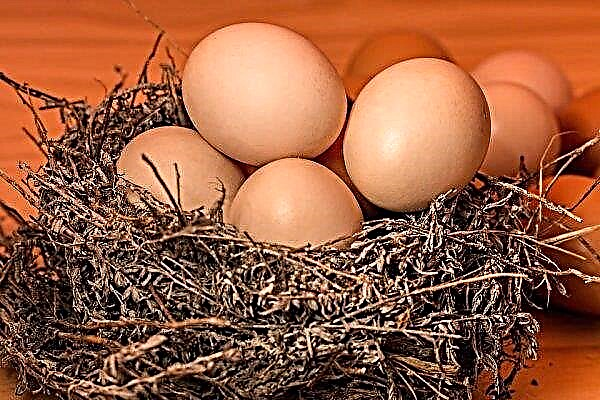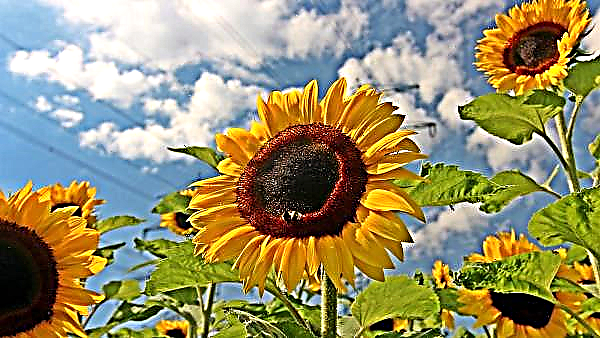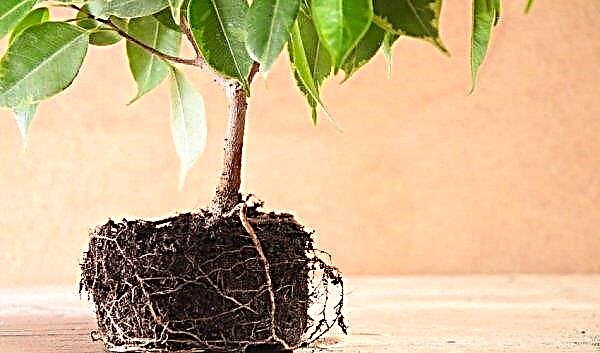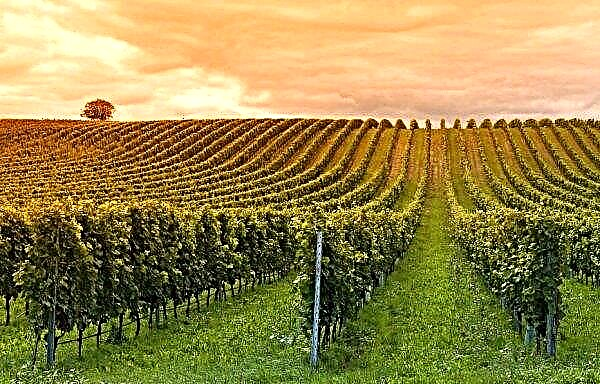Viburnum vulgaris is cultivated to produce healthy berries with antioxidant, anti-inflammatory, and vitamin properties. It’s easy to grow this berry plant. You can learn about the features of planting and care of the Taiga Ruby variety from the article.
Description and description of viburnum Taiga rubies
Before embarking on cultivation on a plot of fruit viburnum, it is necessary to select a variety that is suitable for climatic conditions in the region, get acquainted with its description and characteristics. The average productivity of one shrub in the first 10 years of life is 8 kg, after reaching 14 years - 11 kg. If we talk about large plantations, then 6.5 tons can be removed per hectare per season.
The plant variety Taiga rubies was obtained as a result of free pollination of Viburnum Rainbow. The employees of the Research Institute of Selection and Gardening of Siberia named after M.A. Lisavenko in 1994. The variety is recommended for cultivation in all regions of Russia.
- The following qualities are characteristic of the described plant:
- average ripening;
- self-infertility;
- high level of frost resistance - up to –35 ° С;
- strong immunity and excellent resistance to infections and pests;
- high level of productivity;
- good drought tolerance;
- exactingness to soil composition;
- Attractive decorative look.
Appearance
Kalina is distinguished by the formation of tall bushes - up to 4 m high. The crown in them is round-oval in shape. Shoots are gray-brown with a reddish tinge. The bark of the plant is covered with cracks.
Flowers
The flowers are collected in beam panicles with a diameter of 5–8 cm, which are located at the ends of young shoots. They have 2 perianths. Painted in pink and white. They have 5 stamens protruding 1.5 cm from the corolla. Corolla consists of five lobes of obovate shape.
Leaves
Young leaves have 3 blades. Subsequently, they degenerate into five-lobed with sharp ends. Oval in shape. They are 5–10 cm long and 5–8 cm wide. Leaf plates have dense pubescence. Painted in dark green. In the fall they turn red and yellow. The bottom leaf plate is light green. Leaves grow on petioles 1-2 cm long.

Fruit
During fruiting, dark red spherical fruits with a diameter of 0.5–0.7 cm are formed. They are collected in brushes of 40–65 pieces. The flesh of the berries is yellow. Their taste is sweetish with a little bitterness. Tasters rated it at 4.5 points. The fruits are suitable for fresh consumption.
They also brew healthy tea, make juice, preserves, and compotes. They tolerate transportation well, without losing their taste and presentation. After ripening, the fruits can continue to hang on branches until frost.
Flowering Period and Ripening Period
Flowering shrubs occur in May - June. The first fruiting occurs in the fifth year after placing the seedling in the ground. Berries ripen in August - September. Since the variety is self-infertile, for pollination and fruit setting, it is necessary to plant 2–3 other species of common viburnum in the immediate vicinity. The duration of regular fruiting of a berry culture is 20 years.
Landing
You can plant viburnum Taiga rubies in 2 terms: from April to June and from September to October. For landing, you must choose a well-lit place, sheltered from the north winds. Light penumbra is allowed. In the shade, the berry shrub will not grow, its decorativeness will deteriorate sharply, productivity will decrease, and the fruits will lose a significant proportion of the sweetness. Viburnum gives the best harvests when grown in moist loamy and sandy loamy soils. The optimum acidity is 5.5–6.5 pH.
Pits for planting seedlings must be prepared in 2-3 weeks. Their depth should be at least 50 cm. The soil extracted when digging the hole must be mixed with organic (peat, humus) or mineral fertilizers (urea - 3 tbsp., Wood ash, dolomite flour - 1 tbsp.).Important! Peat, sand and podzolic soils are not suitable for cultivating viburnum.

Seedlings must be purchased at a garden store or nursery. They are sold with an open root system or in a container. When buying open seedlings, you should evaluate the condition of their root system. She must be healthy and well developed. Seedlings from the container should be planted without destroying the earthen coma. So they quickly adapt to new growing conditions.
The technology of planting seedlings is as follows:
- At the bottom of the pit make an earthen hill.
- Put a plant on it, evenly distributing the root system and deepening the neck by 5 cm.
- Fill the hole with fertilized soil.
- Trample.
- Make a groove for moistening at a distance of 20 cm from the trunk along the entire diameter.
- Pour a bucket of water into it.
- Lay a layer of mulch from sawdust and peat in the near-trunk zone.
Video: Planting viburnum
After landing care
Care for viburnum requires standard. It includes regular watering, top dressing, cultivation, weeding, mulching, pruning, preventive measures against infections and pests. Watering for viburnum needs moderate. Water stagnation must not be allowed. Young plants are watered once a week, adults - during the growing season and fruiting. Irrigation volumes must be adjusted so that the soil is moistened 40 cm in depth.
Irrigation should be combined with loosening, which is necessary to prevent the formation of a hard crust, which prevents the normal penetration of moisture and air to the roots. In order to prevent the development of infections in the garden and the invasion of harmful insects, it is important to timely remove weeds that are carriers of diseases. They need to be uprooted and burned.
Reduce the number of watering, cultivating and weeding can be by mulching the trunk zone. A layer of mulch maintains an optimal level of soil moisture, inhibits the growth of weeds. To get a high-quality and regularly high yield bushes should be fed. The first top dressing must be done 3 years after planting. Organic fertilizers are applied once every 2 years. Rotten manure is best suited for top dressing. It is brought under digging in the fall.
Mineral mixtures are added annually in the following periods:
- urea (2 tbsp.) before blooming
- before flowering - potassium sulfide (2 tbsp. l.) or wood ash (1 tbsp.);
- in the middle of summer - a complex mixture (60 g).
Important! Fertilizing is carried out exclusively in moistened soil. Otherwise, you can provoke a burn of the root system.
In summer, it is advisable to pinch branches that have reached a length of more than 40 cm. This will provoke the appearance of more flowers and ovaries, as well as young shoots. Every 6 years in the autumn you need to remove branches that do not bear more fruit. At the same time, no more than 15 shoots are left on the bush.
 Another indispensable care measure is pruning. Since the branches of viburnum grow quickly and can grow up to 40 cm per year, they need to be regularly shortened to facilitate care and prevent the development of diseases.
Another indispensable care measure is pruning. Since the branches of viburnum grow quickly and can grow up to 40 cm per year, they need to be regularly shortened to facilitate care and prevent the development of diseases.
In spring, pruning is carried out for sanitary purposes - all branches that are sick, twisted, broken, become old are removed. In the process of crown formation in plants, before they reach the age of 4 years, 7 strong branches that will be skeletal should be chosen, the rest completely cut out.
Did you know? Since ancient times, Slavic peoples considered viburnum a wedding plant, decorating it with treats and a bride’s wreath. Today, the return of an ancient tradition is observed - many girls weave viburnum clusters in wreaths of natural flowers.
Since viburnum is a winter-hardy plant, only young bushes need shelter for the winter. Old ones can easily endure even harsh winters. The branches of young specimens should be wrapped in burlap, spanbond, and the root system should be insulated with a 10-cm layer of peat or humus. Shelter must be arranged immediately after the temperature drops below 0 ° С. It should be removed when warm weather sets in the spring.
 Berries are best harvested after the first frost. It was at this time that their composition contained the highest content of useful elements, and in their taste the least bitterness.
Berries are best harvested after the first frost. It was at this time that their composition contained the highest content of useful elements, and in their taste the least bitterness.
So, viburnum Taiga rubies are easy to grow in a suburban or personal plot. If you choose a good place for her and make regular care, she will please with her decorative effect, long and plentiful harvests of healthy berries.

